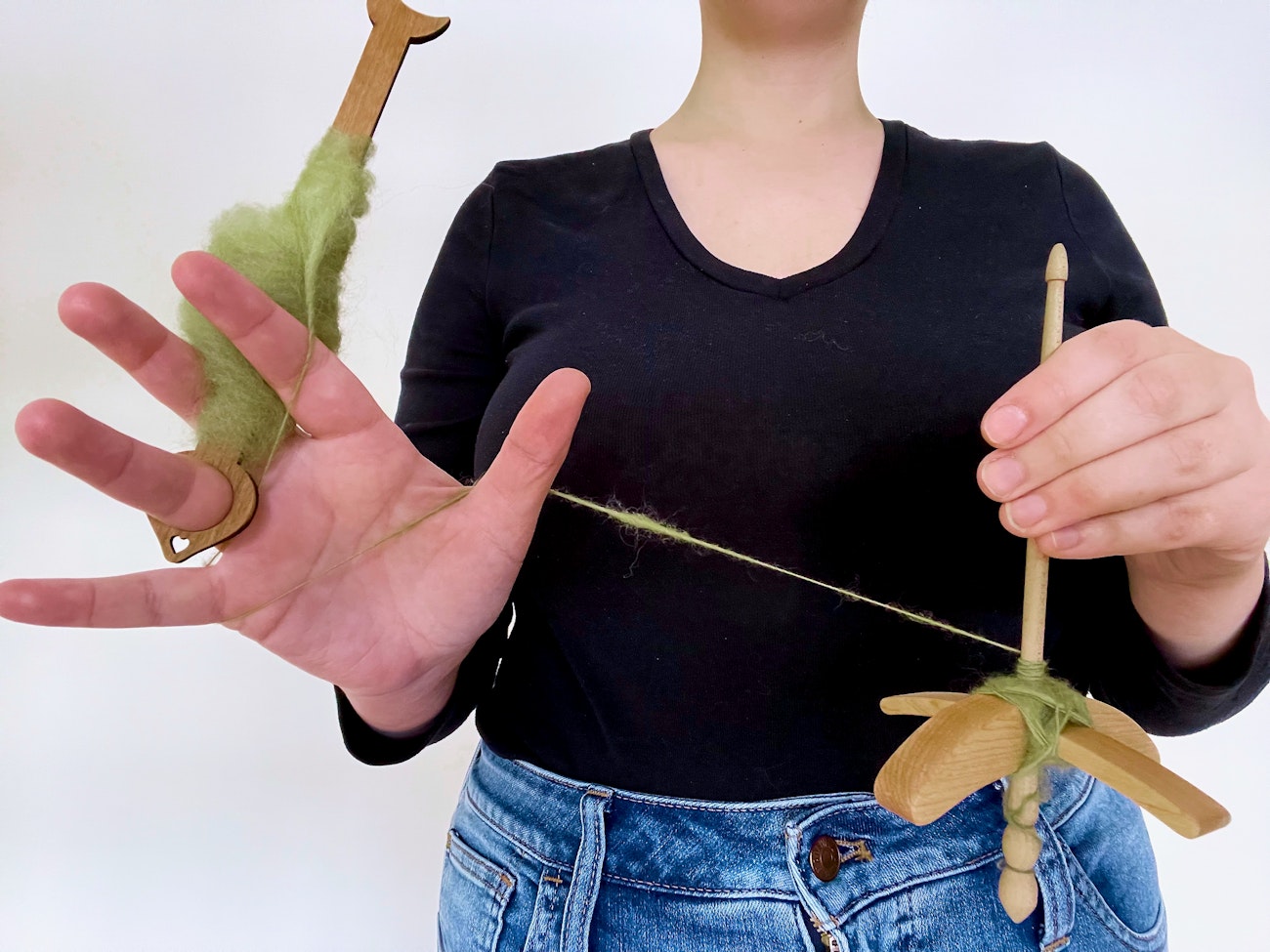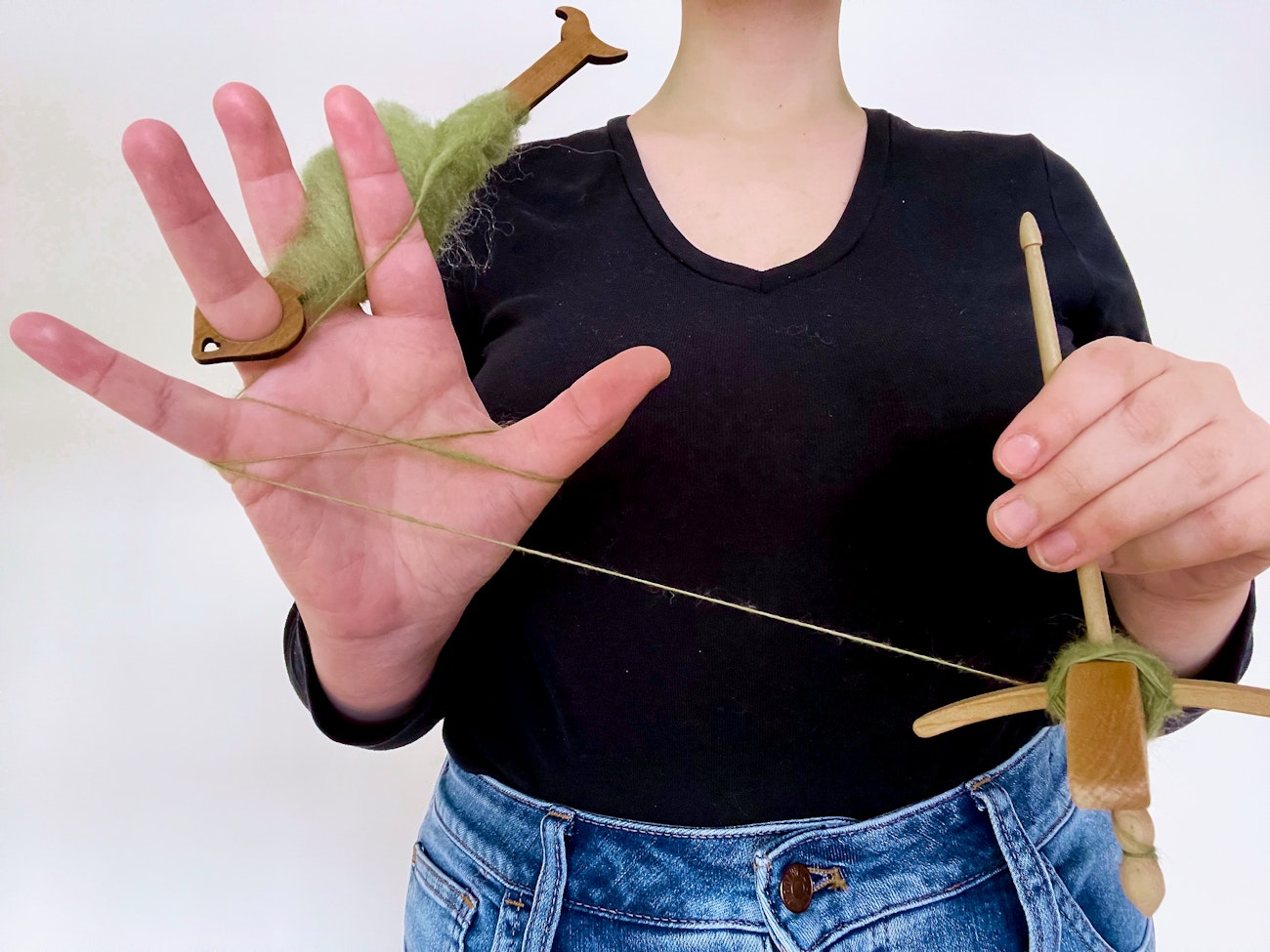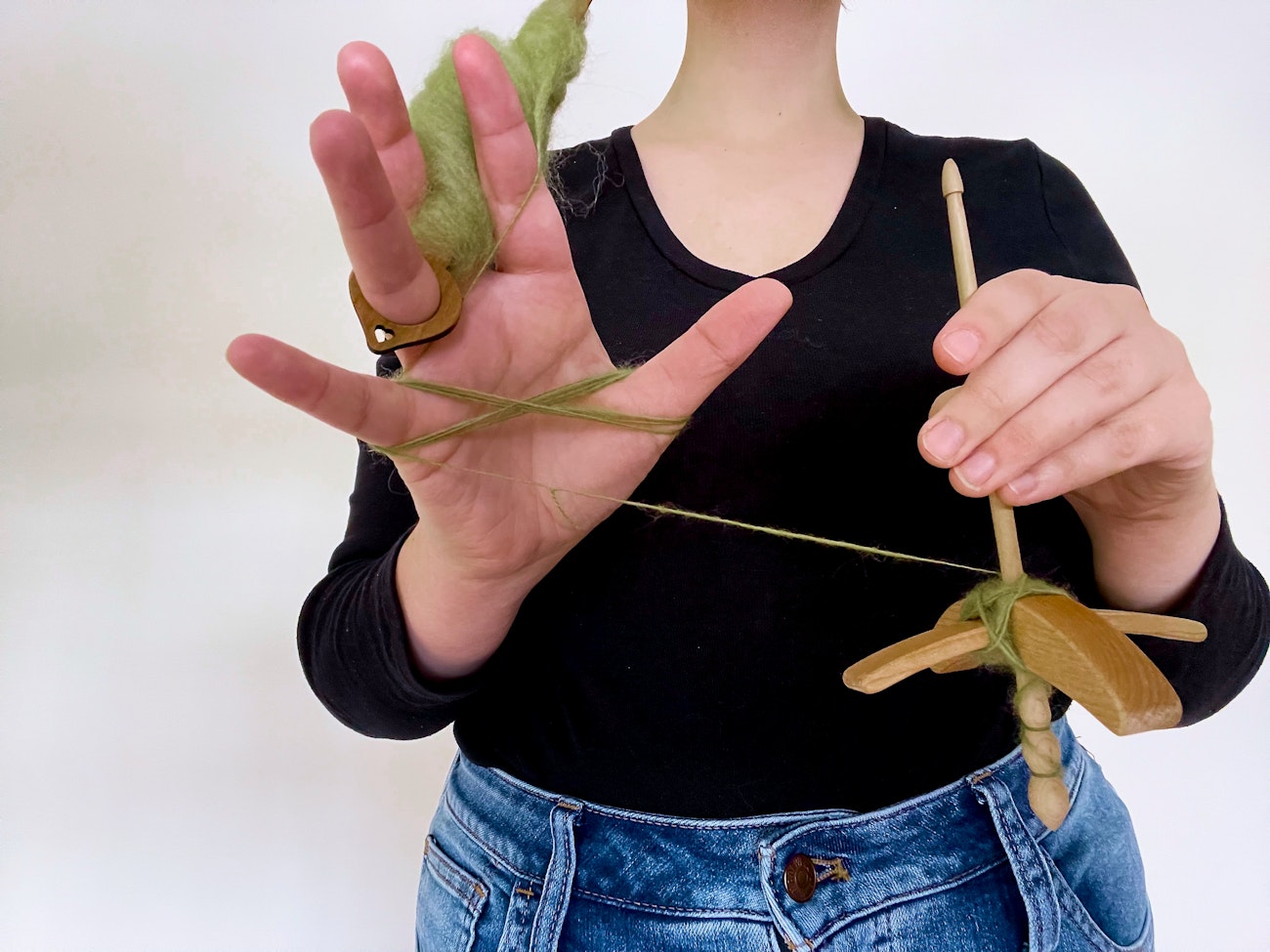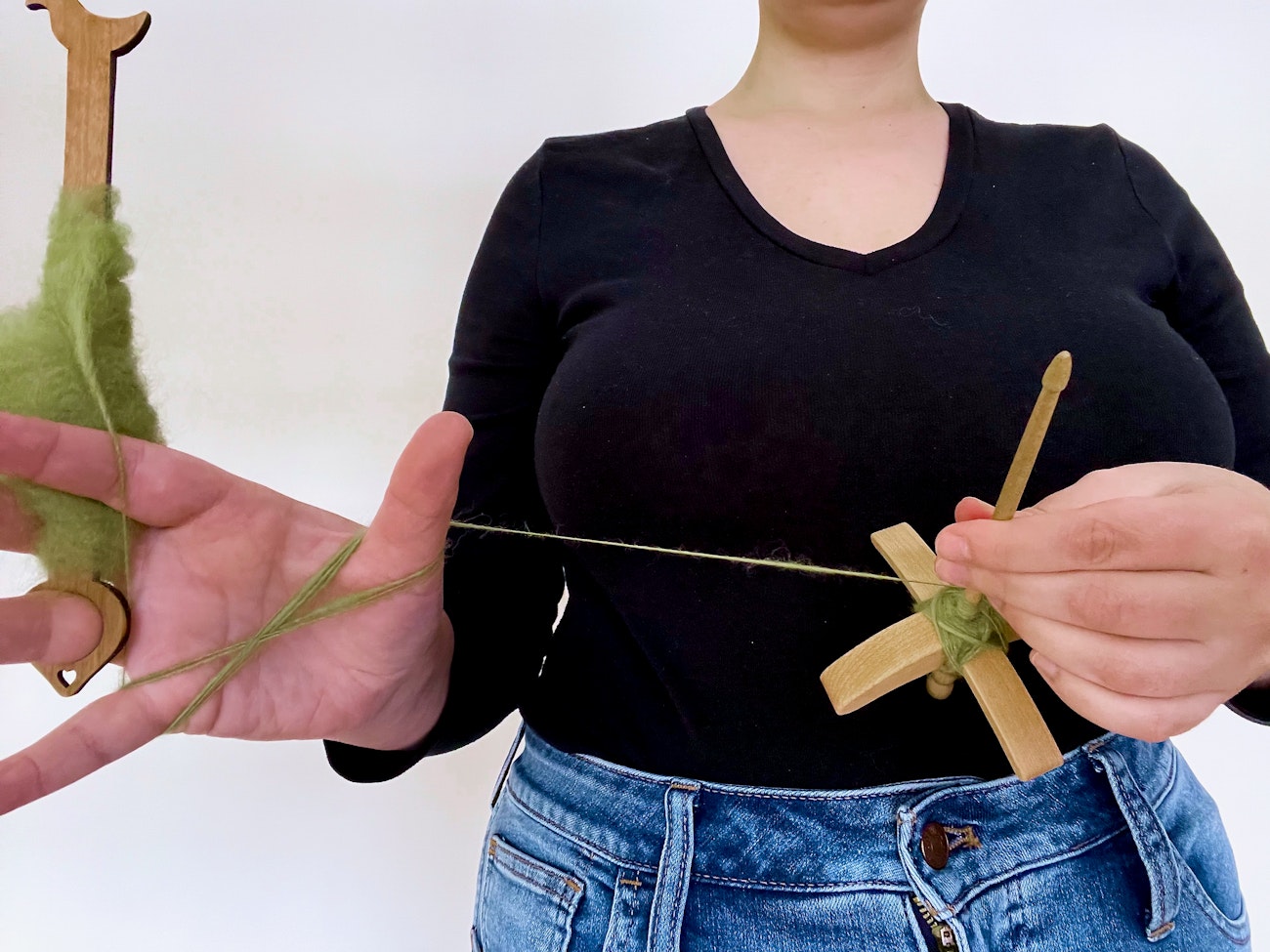Here’s a phrase common in a fair number of spindle technique tutorials: “Butterfly the yarn onto your hand.” It’s also commonly left unexplained.
It’s an extremely intuitive technique, one that spinners may pick up on their own just through the practice of spinning. Still, even simple techniques deserve tutorials.
What Does it Mean to Butterfly My Yarn Singles?
Butterflying your yarn singles simply means wrapping the freshly spun singles onto your fiber hand under tension. As you cross between your thumb and pinkie finger, it forms a “butterfly” shape. A full tutorial is below. (Editor’s note: Shell is using a ring distaff. For more on spinning with a distaff, see “5 Tips for Spinning with a Distaff” by Kim Caulfield.)
Why Should I Butterfly My Yarn Singles?
Spinners use the butterfly technique for a few reasons.
First, it’s a convenient way to solve the problem of arm length. Spin singles as long as you like, wind them into a butterfly on your hand to keep them from tangling, then wind onto the cop.
Secondly, it’s a necessary technique for winding on a temporary cop, a quick-and-dirty place to park fresh singles before carefully building a beautiful cop later.
Third, it makes it possible to ply your singles as you spin them. Butterflying the singles onto your hand enables you to chain ply as you transfer the yarn back to the spindle. (Editor's note: This technique is called Ply on the Fly and is featured in Spin Off Summer 2012. And look for an upcoming web post also by Shell on this technique.)
How To: Butterflying Yarn Singles
1. Setup

Bring the singles across your palm. Photos by Shell Feda
Spin a length of singles as you usually would. When you’re ready to wind, keep your fiber supply to the back of your hand and bring the singles across your palm.
(Note: I don’t mind a little twist in my fiber supply, so I don’t pinch it off here. But if you hold your fiber loose or want to keep the twist out of the supply, use your second and third fingers to pinch it off. You’ll need to keep your thumb free.)
The singles travel across your palm to the back of your hand between your third finger and pinkie. It wraps around the pinkie on the outside.
From there, with the singles at the base of your pinkie, bring it across your palm and to the back of your hand between your first finger and thumb.
2. The First Cross

Wrap the singles across your palm and around your pinkie.
The singles now wraps around the outside of your thumb, then goes back across your palm, crossing its previous path. It again winds around your pinkie, traveling between the third finger and pinkie to wrap around the outside of the pinkie.
3. Continuing to Wind

Continue to wind the singles, building up layers.
Continue winding the singles around your hand in the established manner, going from pinkie to thumb and back again, always crossing in the middle to make the butterfly shape.
4. Winding On and Beyond

Transfer the singles to a cop.
When you’ve wound all the loose singles onto your hand and the distance between the spindle and your fiber hand is manageable and comfortable, you’re ready to wind your cop (either temporary or permanent).
Remove the yarn from the half hitch or spindle hook and wind on until you have just enough singles left to act as a leader for the next round.
If you’re building a temporary cop, wind the yarn from the spindle back to your hand until the temporary cop is empty. From there, build your permanent cop.
And you’re ready to spin more singles!
Shell Feda is a writer, multimedia artist, historian, and dreamer. They are particularly interested in late-nineteenth and early twentieth century history and the artistic and quotidian ephemera extant from that period. You can find Shell on social media @seabornecloud.

